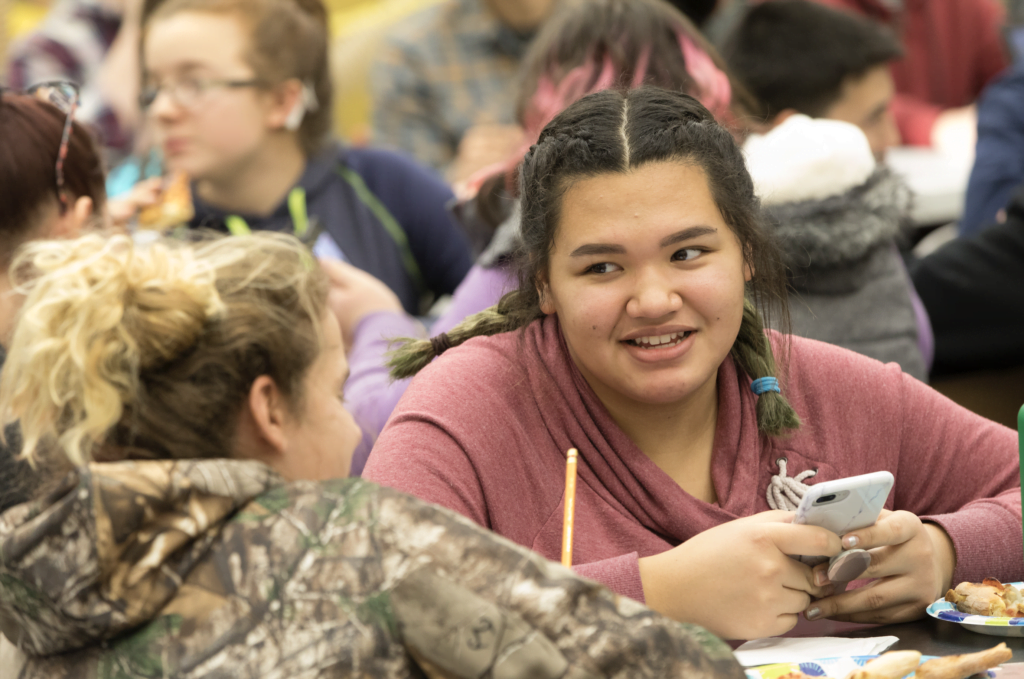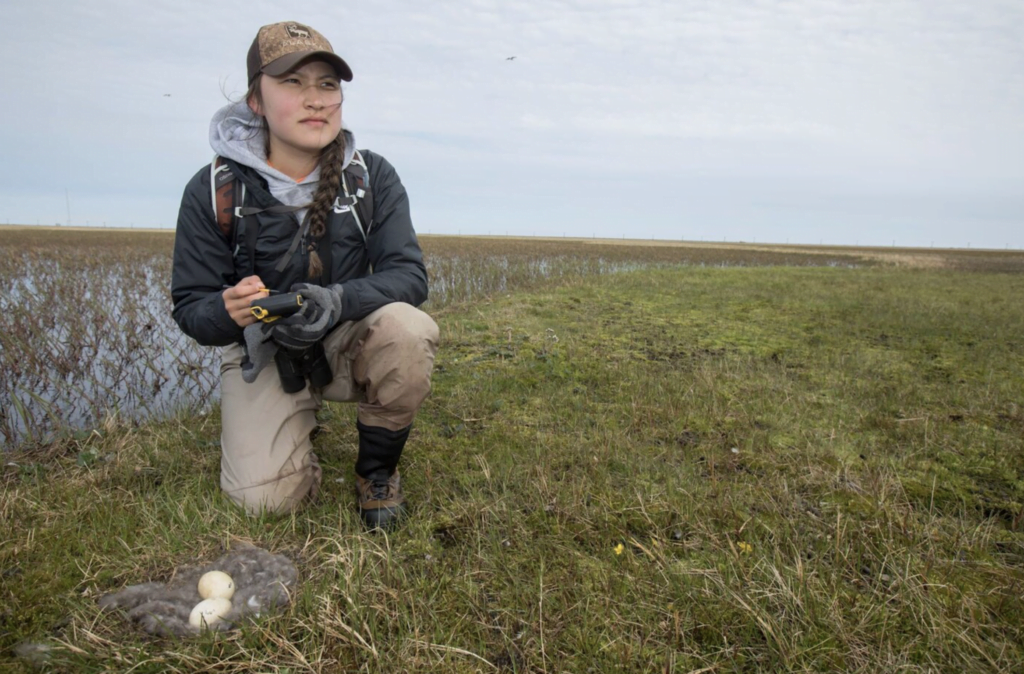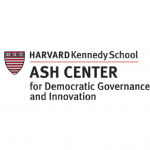
How do you get students engaged when you can’t get them together in person? How do you stay on top of schoolwork when your schedule has been turned upside-down? What can you do to build community in a classroom that only exists online?
This year’s pivot to remote learning has raised these questions and more for students, teachers and families across Alaska. And while distance learning is challenging for just about everyone involved, there are some strategies that can help make it easier — along with some success stories and, believe it or not, a few silver linings.
To find out how young Alaska scholars are making online school work, we turned to students at the Alaska Native Science & Engineering Program, which, like many Alaska schools, has been all-virtual since March.
After a mid-semester quick pivot to distance learning, ANSEP’s annual summer Acceleration Academy, a five-week version of its full-time high school, was its first program of the year to be completely virtual from start to finish. Acceleration Academy offers students the opportunity to simultaneously earn high school and college credits.
“During the school year, our students are mainly in the Anchorage and Valley area,” said UAA Assistant Professor of Mathematics Matthew Gho, a member of the ANSEP faculty. “In the summer, that’s when it’s kind of more focused to the rural students.”
Traditionally, a big part of the attraction for the summer Acceleration Academy is what goes on outside the classroom. Students from across the state visit the University of Alaska Anchorage campus, where they stay in dormitories and participate in social activities like swimming, trips to the movies and other opportunities that many of them don’t have in their home communities. Without the draw of the social experience, ANSEP administrators worried that they would see a downturn in enrollment.
Instead, the opposite happened: The summer Acceleration Academy saw its highest single-session enrollment ever, with 90 students from around the state participating. With a record number of students enrolled, the ANSEP staff knew they needed to make the online academy as successful as possible, and with no in-person presence, it all had to happen in the (virtual) classroom.
“It’s great when (students) can come face-to-face and there’s all those fun activities they can do,” Gho said. “Those other things are perks — but I think a lot of them, they just want opportunities. They want to succeed. They want to know that they feel like they can be successful.” Collectively, this summer’s Acceleration Academy students completed 244 college credits, with an 80 percent credit completion rate.
With a record-breaking summer under their belts and a full fall term of all-distance education nearly complete, we asked ANSEP students and faculty to share the strategies that have made them successful.

Tip #1: Establish a routine
Humans — especially children — thrive on routine, and schooling from home means students (and parents) have to impose their own structure on the school day.
“One of the things that students need to learn at the university level is developing a good schedule and study habits,” Gho said. One of the goals of this summer’s online academy was “helping the students get into a schedule of success,” he added — checking in at designated times, attending online group study sessions, and staying in contact with teachers and peers.
Debra Lane-Hayes, a student in ANSEP’s year-round Acceleration Academy, said she found it easier to establish good habits by focusing on one step at a time.
“I had to form a routine,” Lane-Hayes said. “It started with a simple thing, like making sure I drank a glass of water in the morning. Then slowly I built a routine to help follow.”
Every few days, she added a new step to her routine, gradually developing a good school-at-home rhythm.
Tip #2: Embrace adaptation
Distance education is a new format for teachers as well as students. Gho said it didn’t take him long to realize that teaching online is not the same thing as teaching in person.
“The first semester, it was a little bit challenging,” Gho said. “I tried doing exactly what I did face-to-face, but I did it online.”
Now is a perfect time for educators to explore new tools they may never have used before, Gho said. He has started to make full use of programs like MyMathLab and WebAssign, which he hadn’t really utilized previously but intends to continue using even when in-person instruction comes back.
The differences go beyond software and technology, he added. While students were facing technical challenges like figuring out how to submit homework electronically, Gho was realizing that his in-person teaching style didn’t translate perfectly to the distance setting.
“When I teach, I don’t just lecture,” Gho said. “I go through a couple of example problems, and then I say, ‘Hey, it’s your turn to try.’”
In person, Gho will have students work in groups or call on individuals to work through equations, and he quickly learned that the approach wasn’t quite succeeding with distance delivery. Now, to make sure he’s reaching everyone, Gho draws students’ names at random to work through problems for the class. He teaches on an iPad and keeps the chat box open on a second screen so he can see comments as they pop up. Sometimes students are shy about expressing confusion, so Gho has learned to go back and do some review problems if he’s not getting many questions.
The goal is the same — make sure everyone has the skills to do the homework — but the delivery mechanism has evolved to better fit the online environment.
Tip #3: Stay in touch
Living on campus is a big part of the summer Acceleration Academy experience. With classes happening online, ANSEP leadership had to figure out ways to help students from all over the state, many of them strangers, get to know one another and communicate openly. The Slack instant messaging app, a favorite in tech-forward workplaces, helped fill the gap.
Student Jessica Martinez started using Slack during the summer program, and it’s still a part of her day now that she’s enrolled in the full-time program.
“I use it every day,” Martinez said. “We’re able to instantly message either our classmates or our mentors.”
Along with consistent daily contact, Martinez said ANSEP has been proactive about creating opportunities for students to come together for online social activities.
“Throughout this semester, our mentor has worked really hard to find ways for us to interact with each other,” Martinez said. “Today we’re going to do a bread-making activity. We still have clubs. We play games together.”
Acceleration Academy student Brock Grant said it has been helpful to be able to attend his regular meetings, like weekly group study sessions (known in ANSEP as “recitations”), over Zoom.
“Many students, including myself, have expressed how helpful it is not just to continue to be connected to such a great web of support, but to just be able to see our fellow students regularly,” Grant said. “(It) does so much for people’s well-being.”
Tip #4: Be intentional about connecting
Many students this year are taking online classes from teachers they’ve never met in person. That means students need to take the initiative to build the relationships that would ordinarily develop organically in the classroom, according to Lane-Hayes.
“Going to every professor’s office hours helps, just so you can build a rapport with the professor, let them know who you are,” Lane-Hayes said. That rapport builds trust, she added, so if later in the semester you need some flexibility with an assignment or deadline, the instructor knows you and is more likely to be accommodating.
For students who may be struggling, Grant recommends initiating study groups over videoconference.
“It will probably feel a little awkward at first to reach out to people to ‘Zoom study,’ but I promise you it will become a great asset to you passing your classes,” Grant said. “This stuff is all very new and challenging. It’s just better to not go in alone. And hey, it’s also just nice to be able to talk to your classmates regularly — so there’s that.”
In-person gathering isn’t just a feature of the summer Acceleration Academy. Anchorage students in the full-time programs are used to having the Acceleration building on UAA’s campus as a sort of home base and gathering spot. Without that physical meeting place, they have been making it a point to connect with one another virtually.
“Distance learning is a struggle for even the strongest students due to the lack of the social aspects of learning,” said Grant’s mom, Meghan McCarthy-Grant, who is also the principal of Chester Valley Elementary School. “I don’t know if I have much advice to share except to make a routine which includes some exercise breaks, creativity activities, and schedule in some social time, even if it is Zoom-based.”

Tip #5: Give yourself a break
Distance learning has been challenging for parents, students and teachers alike, and even with a COVID-19 vaccine on the horizon and some school districts working on reopening plans, there are times when it all feels like too much.
That’s why you need to remember to be forgiving and take care of yourself, according to Lane-Hayes. For her part, that has meant building relaxation time into her demanding study schedule.
“Recently I’ve been having to review for finals, so what I do is I start at 8 a.m. and I work for an hour, and then I pick a TV show that has a 20-minute-long episode,” Lane-Hayes said. “I work for an hour, and then I watch an episode of a show.”
While she watches, she’ll work on a beading project.
“By the end of the day, I have a finished pair of earrings, and I have my work done,” she said.
Tip #6: Look for silver linings
While the pandemic has limited many activities, this year’s shift to distance learning has also provided some new opportunities for Alaska students to take advantage of programs they couldn’t access in person. Martinez has participated in ANSEP summer programs since she was in middle school, but transportation issues kept her from enrolling during the school year. This year, with courses moved online, Martinez was able to transfer to the full-time Acceleration Academy.
“This semester, I’m taking economics, calculus I and writing (through UAA),” Martinez said. “Next semester I’m going to take calculus II. If I stuck with regular high school, I would have not had the chance to do that.”
She’s not the only student who is taking advantage of remote learning this way. Often, students who attend the summer Acceleration Academy don’t have access to college-level math classes in their home communities, so they lose some progress between summers.
“Now that we’re kind of doing things online, it’s opening up more opportunities,” Gho said. “I had some students from this last summer that are taking courses with me currently.”
The flexibility swings both ways. With the help of a cellular booster, Gho was able to teach class from his fish camp in Gakona, an experience that heightened his awareness of the connectivity problems his rural students sometimes face.
“It kind of gets me excited to see how we can do these classes online just as we do them face-to-face and students have success with them,” Gho said.
This story was originally published in the Anchorage Daily News.
This story was originally published in the Anchorage Daily News.Since 1995, the Alaska Native Science & Engineering Program has helped set thousands of Alaska students on a career path to leadership by providing inspiration, guidance and opportunity. Through the full-time Acceleration Academy, students and their families can save $75,000 or more in college costs by earning two years or more worth of college credits. Additionally, by eliminating remediation, students save money and the social cost of failure is reduced, while the State of Alaska saves about $37,000 per full-time Acceleration Academy graduate. Since its inception in 2015, full-time Acceleration Academy students have completed more than 3,000 college credits, collectively.



